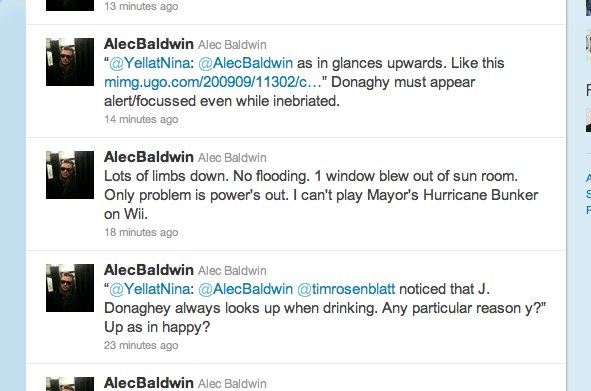I read an article today about Steve Jobs on Obama, and I know everyone gets all excited when it’s a Jobs quote, but I think his take on this is right, and if anything, the fact that he said it might push some people to pay attention.
‘You’re headed for a one-term presidency,” Steve Jobs told President Obama at the beginning of a one-on-one session the president requested early last year. As described in the authorized biography by Walter Isaacson, Apple’s founder said regulations had created too many burdens on the economy.
Jobs was an Obama supporter, but his just-disclosed comments are typical of a new frustration with Washington among Silicon Valley executives. Their high-tech companies are supposed to be the country’s engine for growth, but the federal government is gumming up the works.
Mr. Isaacson reports that Jobs offered to Mr. Obama to “put together a group of six or seven CEOs who could really explain the innovation challenges facing America.” But after White House aides got involved with planning the dinner, it became unwieldy and Jobs pulled out.
When a smaller dinner was arranged last February, the result was more estrangement of Silicon Valley from Washington. Mr. Obama was seated between Jobs and Facebook founder Mark Zuckerberg. The dinner also included top executives from companies such as Google, Cisco and Oracle.
According to Mr. Isaacson, Jobs “stressed the need for more trained engineers and suggested that any foreign students who earned an engineering degree in the U.S. should be given a visa to stay in the country.” The president reportedly replied that this would have to await broader immigration reform, which he said he was unable to accomplish.
“Jobs found this an annoying example of how politics can lead to paralysis,” Mr. Isaacson writes. “The president is very smart, but he kept explaining to us reasons why things can’t get done,” Jobs said. “It infuriates me.”
Jobs told Mr. Obama that Apple employs 700,000 factory workers in China because it can’t find the 30,000 engineers in the U.S. that it needs on site at its plants. “If you could educate these engineers,” he said at the dinner, “we could move more manufacturing jobs here.”
One of the benefits of free trade, including in the movement of labor, is that skills would go where they are most valued. Jobs made the point that Silicon Valley is mystified by a policy that instead educates foreigner engineers at top U.S. universities, then sends them home immediately.
Among the attendees at the dinner was venture capitalist John Doerr, who during an Internet conference in 2008 described the absurdity memorably: “I would staple a green card to the diploma of anyone that graduates with a degree in the physical sciences or engineering in the U.S.”
Foreign nationals in the U.S. now account for 70% of doctorates in electrical engineering and half the master’s degrees. They would be more productive if permitted to remain in the U.S. Academic studies estimate that a quarter of technology businesses started in the U.S. since 1995 have had at least one foreign-born founder. Half of Silicon Valley startups are founded by foreigners.
The U.S. issues 140,000 green cards a year, which is not enough to meet demand even in this soft economy. Worse yet, the work-permit laws say that the residents of no country can get more than 7% of the permits. This is fine for Andorra and Liechtenstein but not for India and China, which have 18% and 19% of the world’s population, respectively. The National Foundation for American Policy calculates the 7% limit means a backlog of 70 years of applications from prospective Indian workers and 20 years from Chinese ones.
Vivek Wadwha is a native of India who started two tech companies in the U.S. before becoming an academic specializing in immigration. He recently testified to Congress that the U.S. is “giving an unintentional gift to China and India by causing highly educated and skilled workers, frustrated by long waits for visas, to return home.”
There’s little prospect of reform, even though Mr. Doerr’s staple-a-green-card idea has been endorsed by everyone from Mitt Romney to Chuck Schumer, the Democratic senator from New York. Rep. Jeff Flake, an Arizona Republican, proposes the Staple Act (an acronym for Stopping Trained in America Ph.D.s from Leaving the Economy). As Pia Orrenius, author of “Beside the Golden Door,” says, letting more skilled workers stay in the U.S. is “as close to a free lunch” as the economy can get.
Jobs himself was the biological son of an immigrant professor father from Syria, who was lucky enough to be a graduate student in the U.S. in the 1950s when it was easier for foreigners to stay. (Jobs was adopted as a newborn.)
The culture of Silicon Valley is defined by engineers who approach problems logically, searching for the most elegant solution. Washington is different. Members of both parties prefer scoring political points on immigration even though this delays smarter approaches. It’s no wonder that people like Jobs who value innovation find Washington so infuriating.
I think that he’s right. I’ve been lightly involved with the IDEA Act going through Congress (thanks Craig Montuori and Tarik Ansari) which is trying to fix some of these issues.
The thing is, the IDEA Act is focused on entrepreneurs, but it’s also nuts that we kick out people who we have trained up to a very high standard who just want jobs. Not just jobs. Taxable jobs. High tax bracket jobs. For all the people freaked out about the economy, and how there are a lot of people not paying taxes (47% of Americans?), by keeping foreign-born, high-wage earners here, we’ll be benefiting by getting more money in taxes, which means lower tax rates for everyone else (what happens to the taxes after they’re taken is a totally different story, but…one piece at a time). Otherwise, we’re wasting money by training people to build up the economies of other countries.
Remember, it’s not “dey took our jerbs”, it’s “our jerbs got replaced by different types of jerbs that America isn’t doing a good job of training citizens for”

To reach more women, who account for about 10% of U.S. motorcycle owners, Harley dealers hold “garage parties,” such as one attended recently by Ms. Ruschman and several dozen other women. Scott Miller, marketing director of the Mentor dealership, spray-painted his hair pink and extolled the psychic benefits of cycling. “It’s about your ability to kind of extend your personality,” he said as the women sipped wine. “Or develop a new one.”
Harley pitches models with lower seats as easier for women to handle. The Harley website has a video showing how even a small woman can use leverage to pick up a bike of 550 pounds or more if it topples over. “The muscles that make it possible are in your legs and your butt,” the video explains.
Harley, With Macho Intact, Tries to Court More Women
Classy move…it seems like they thought through the feelings and mental state of what stops women from getting into riding motorcycles, and then went out to deal with the issue head-on. Much better than just making a new bike but not following through on getting women to enjoy motorcycling. There’s a lot to learn from this — excellent move on product-design-product-management. Might be interesting to watch these guys in the future.





